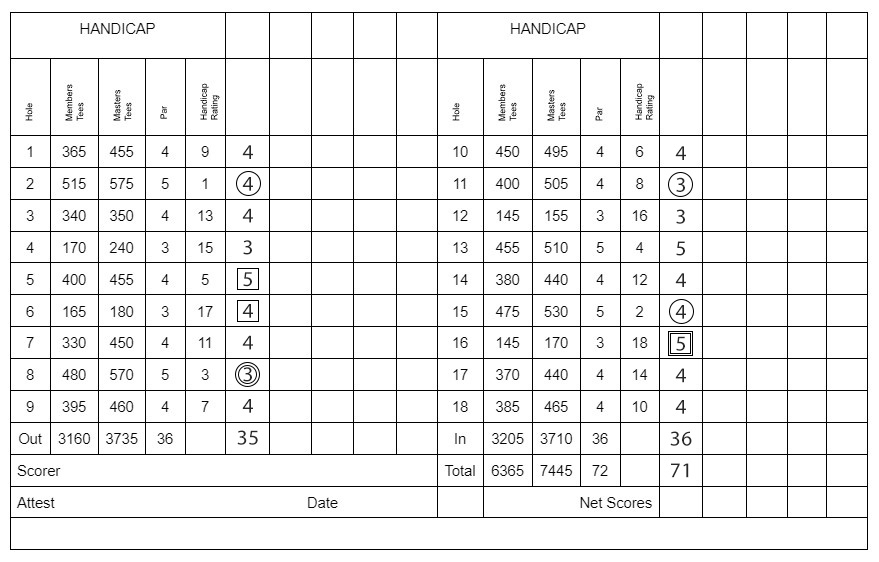What is a Par in golf?
A par is the number of strokes it should take to complete a particular hole, there is a par score for every golf hole and golf course. Holes on traditional golf courses are either a par 3, par 4 or par 5 depending on their length and/or difficulty. This means that most golfers should be aiming for par scores on each hole to match the hole’s par.
Most golf courses have a total par of 72 (sometimes 70 or 71) for 18 holes. Most of the time, the front and back nine holes will each be a par 36. This equals a par 4 average, it is common for golf courses to have an even amount of par 3s, par 4s and par 5s to achieve the par 72 target. A par 4 is the most common par for an individual hole, many courses consist of eight par 4s, five par 3s and five par 5s.
Related article: What is a birdie?
Some non traditional golf courses may be exclusively par 3 courses and others may have a par 7 hole such as Satsuki Golf Course in Japan.
What does a golf par mean?

Par is the reference point used to determine how well you play golf and to calculate your handicap.
Generally golfers try and score as low as possible for each individual hole, a golfer’s score is either good or bad depending on the quality of the golfer and/or the difficulty of the hole.
Expert golfers are expected to par each hole at a minimum, a ‘scratch golfer’ (handicap of zero) would expect to finish level par each round, and recreational golfers are expected to finish above par each round.
Golf scoring explained
Scoring golf is as simple as adding up the number of strokes to complete individual holes and adding up the scores from all individual golf holes played to give your overall score.
Related article: How to score in golf
Golf scoring terms
The following golf terms are used when expressing a score on an individual hole:
- Double eagle (albatross) – 3 strokes fewer than par
- Eagle – 2 fewer strokes than par
- Birdie – 1 stroke less than par
- Par
- Bogey – 1 stroke more than par
- Double bogey – 2 strokes more than par
- Triple bogey – 3 stroke over par
- Quadruple bogey – 4 strokes over par
Par is the only term above which can be applied to both an individual hole and for the entire course.
Example conversation on the golf course: “I am 15 over par for the entire round, I was even par after the first 3 holes.” This implies that the golfer scored a par average for the first three holes, it could have three pars, or a bogey, birdie and par.
Regulation golf scoring explained
‘Regulation golf’ is a golf term which relates to how many shots it should take you to get onto the green based on you having two putts for any individual hole. A par 3 for example, should be reachable in 1 shot, assuming that there will be two strokes on the green.
It is expected that a professional golfer will play regulation golf and par most holes at a minimum. Professional golfers on the PGA Tour would be expected to get multiple birdies in a round. A birdie could be achieved by getting it on the green in regulation and sinking it in just one putt.

